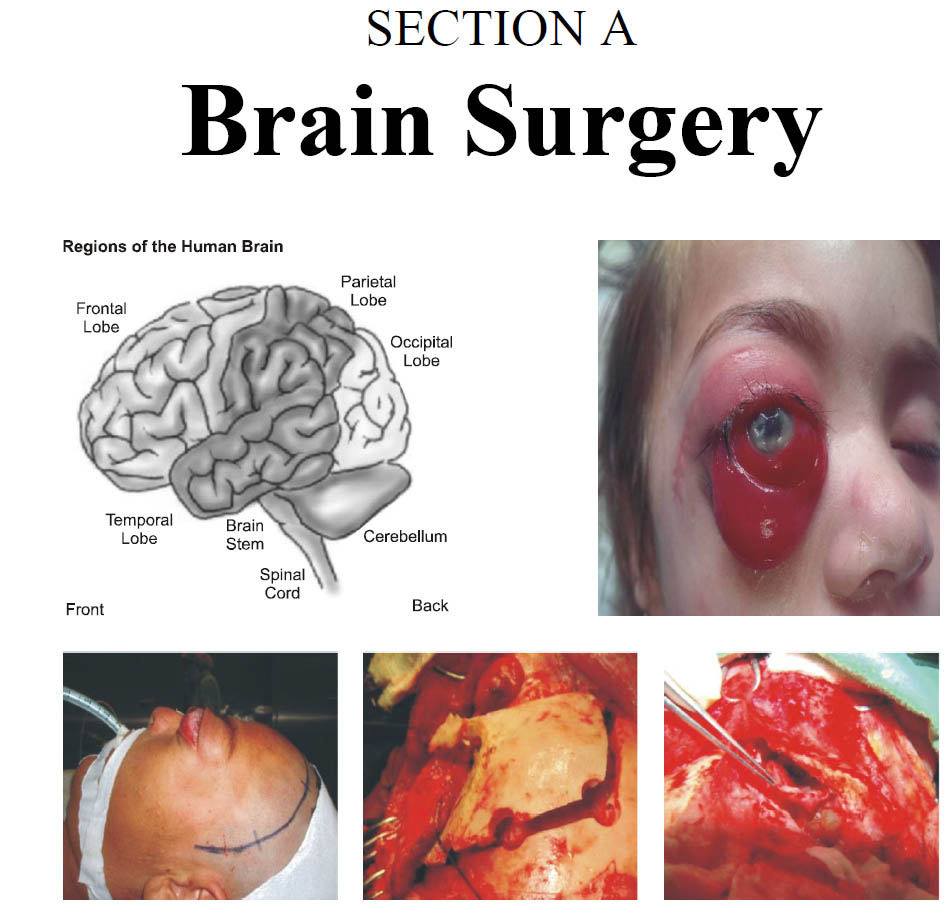Surgical Outcome of Cerebellopontine Angle Tumors
Keywords:
Cerebellopontine angle tumors, retrosigmoid sub-occipital approach, retractorless methodAbstract
Objectives: The purpose of this study was to evaluate the clinical features and surgical outcome of CP tumors with retractorless method.
Material and Methods: It is a retrospective study of 7 cases operated in Neurosurgery Unit 1, PINS/Lahore General Hospital, Lahore. Study span was 2 months and follow up duration was 15 days. Predominating symptoms were related to cranial nerves 5th, 6th, 7th, 8th and cerebellum.
Results: Age range was 25 – 45 years with an average age of 35 years. 4 patients were male and 3 patients were female. In all patients, surgery was performed. Clinical presentation was tinnitus, decrease hearing, hearing loss, abnormal balance, headache, facial numbness, buccal numbness, ataxia and trigeminal neuralgia in one case. All patients were operated through retrosigmoid sub-occipital approach with retractorless method. VP shunt was inserted in 3 cases and EVD was done in all other cases just before surgery. Histopathology report was 4 patients were of vestibular schwannoma, 2 were of meningioma and 1 was of epidermoid cyst. Five patients operated successfully with no new focal neurological deficit. One patient died intraoperatively and one patient was re-explored postoperatively due to intracranial hemorrhage.
Conclusion: It is concluded that surgery via the retrosigmoid approach with retractorless method is relatively safe corridor for the treatment of CP Angle Tumors.
References
2. Babu R, Sharma R. Bagley JH, et al. Vestibular schwannomas in the modern era: epidemiology, treattnent trends, and disparities in management. J Neurosurg. 2013; 119: 121-130.
3. House WF. The acoustic neuroma saga.jLaryngol Otol. 1995; 109: 367-368.
9. Matsushima K, Yagmurlu K, Kohno M, et al. Anatomy and approaches along the cerebdlar-brainstem fissures. J Nmrosurg. 2016; 124: 248-263.
4. Ruttledge MH, Rouleau GA Role of the neurofibromatosis type 2 gene in the development of tumors of the nervous system. Nmrosurg Focus, 2005; 19: E6.
5. Yoshimoto Y. Systematic review of the natural history of vestibular schwannoma. J Nmrosurg. 2005; 103: 59-63.
6. Sobel RA Vestibular (acoustic) schwannornas: histologic features in neurofibromatosis 2 and in unilateral cases. J Neuropathol Exp. 1993; 52: 106-113.
7. Roser F, Nakamura M, Dormiani M, et al. Meningiomas of the cerebellopontine angle with extension into the internal auditory canal. J Neurosurg. 2005; 102: 17-23.
8. Gerganov V, Bussarsky V, Romansky K, et al. Cerebdlopontine angle meningiomas. Clinical features and surgical treatment.] Neurosurg Sci. 2003; 47: 129-135, Discussion 135.
9. Lange M, Due LD, Horn P, et al. Cerebellopontine angle meningiomas (cpam)-clinical characteristics and surgical results. Neurol Nmrochir PoL 2000; 34: 107-113.
10. Nakamura M, Roser F, Mirzai S, et al. Meningiomas of the internal auditory canal. Nmrosurgtry. 2004; 55: 119-127.
11. Nagasawa D, Yew A, Safaee M, et al. Clinical characteristics and diagnostic imaging of epidermoid tumors. f Clin Neurosci. 2011; 18: 1158-1162.
12. Akhavan-Sigari R, Bdlinzona M, Becker H, et al. Epidermoid cysts of the cerebellopontine angle with extension into the middle and anterior cranial fossae: surgical strategy and review of the literature. Acta Neurochir ~en}. 2007; 149: 429-432.
13. Cavusoglu H, Kahyaoglu O, Aydin Y. Arachnoid cyst of the cerebellopontine angle causing isolated acute hearing loss, with literature review. Acta Neurochir {w.en). 2015; 157: 1999-2001.
14. Grande-Martin A, Diaz-Conejo R, Verdu-Perez A, et al.Trigeminal neuralgia in a child with a cerebdlopontine angle arachnoid cyst. Pediatr Nmrol. 2015; 53: 178-179.
73. Wang A. Kleinman G, Murali R, et al. Metastatic renal cdl carcinomamimicking trigeminal schwannoma in a patient presentingwith trigeminal neuralgia.] Neurol Surg Rep. 2015; 76: e282-e286.
15. Joo HY, Chae MH, LlmJH, et al. A case of gastric cancer manifesting as a solitary brain metastasis in the cerebellopontine angle that mimicked acoustic neuroma. Chonnam Medf 2013; 49: 133-135.
16. Johnson J, Morcos J, Elhammady M, et al. Renal cell carcinoma metastasis to the cerebdlopontine cistern: intraoperative onyx eibolization via direct needle puncture.] Nmrointerv Surg. 2014; 6: e41.
17. Ariai MS, Eggers SD, Giannini C, et al. Solitary metastasis to the faciallvestibulocochlear nerve compla: case report and review of the literarure. World Neurosurg. 2015; 84 (1178): e1115-e1178.
18. Wtlson JR, Kumar R, van Hille PT. Cerebdlopontine angle metastasis of a parotid mucoepidermoid carcinoma arising from perineural invasion

Downloads
Published
Issue
Section
License
The work published by PJNS is licensed under a Creative Commons Attribution-NonCommercial 4.0 International (CC BY-NC 4.0). Copyrights on any open access article published by Pakistan Journal of Neurological Surgery are retained by the author(s).












